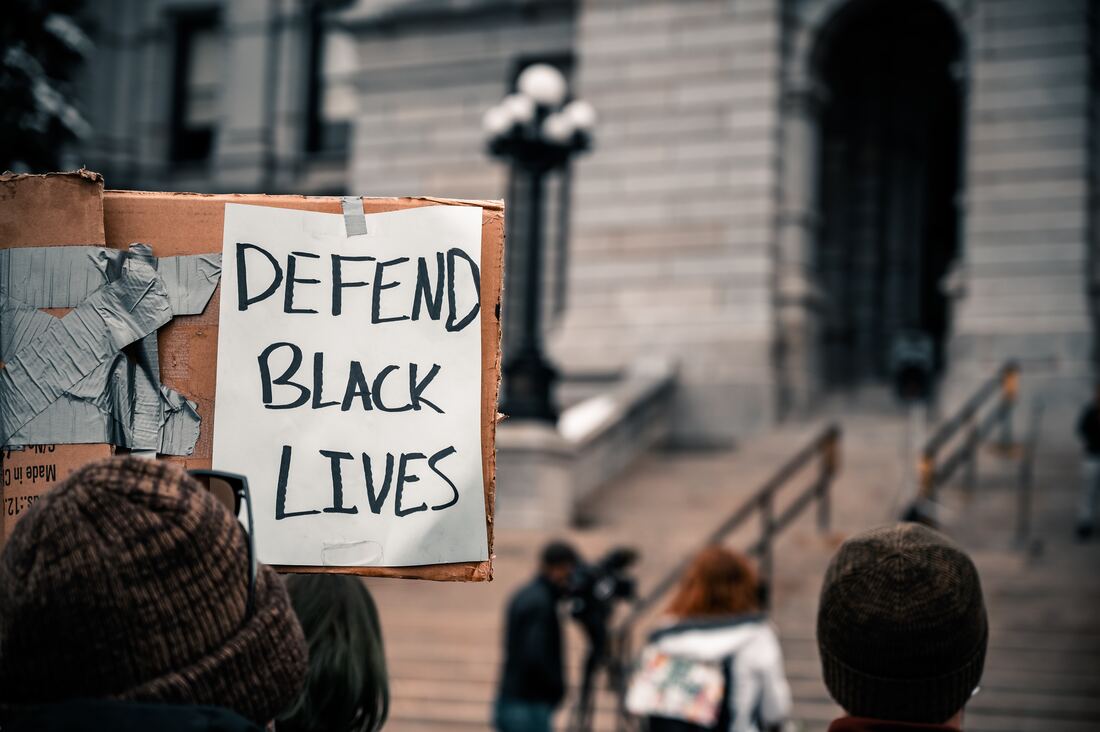What is the Civil Rights Act of 1964?
By: Tracy Rodriguez

Background on the Civil Rights Act of 1964
Time to learn more about American history again! This time we will take a deep dive into the Civil Rights Act of 1964. If you didn't know, Congress passed this law to end discrimination and racial segregation in workplaces and public spaces. Therefore, people could no longer be restricted from locations or activities based on their race, the color of their skin, sex, or national origin. Former President John F. Kennedy was the first person to propose the law. However, after his assassination, President Lyndon B. Johnson adopted the plan and signed it into law after Congress passed it on July 2, 1964. The Civil Rights Act of 1964 marked a turning point in American history. Without the law's establishment, we would not live in the same diversified and integrated country that we live in today.
Time to learn more about American history again! This time we will take a deep dive into the Civil Rights Act of 1964. If you didn't know, Congress passed this law to end discrimination and racial segregation in workplaces and public spaces. Therefore, people could no longer be restricted from locations or activities based on their race, the color of their skin, sex, or national origin. Former President John F. Kennedy was the first person to propose the law. However, after his assassination, President Lyndon B. Johnson adopted the plan and signed it into law after Congress passed it on July 2, 1964. The Civil Rights Act of 1964 marked a turning point in American history. Without the law's establishment, we would not live in the same diversified and integrated country that we live in today.
The United States Before the Bill's Passing
Before the Civil Rights Act of 1964, many states implemented Jim Crow laws. This made it difficult to pass this legislation since many people were opposed to living in a new country where all races coexisted. Pre-existing laws made racial integration between Whites and Blacks illegal, and they were primarily enforced in the South. Given that some White people thought themselves to be superior to African Americans since the government showed them greater preference, the law may have had an impact on their way of life.
Naturally, there were countless things that Black people were prohibited from doing, but for the purpose of this article, we will keep it short. Moreover, the Jim Crow Laws prohibited African Americans from interacting with White people, including shaking their hands. Racial integration at meals was not possible, and if it did occur, Caucasians were served first. African Americans were also prohibited from showing affection for one another in public. Finally, because the legal system guaranteed White people higher standards, African Americans received subpar treatment in areas like education, employment, and health care.
Nevertheless, when the Civil Rights Act of 1964 was established, the poor treatment of African Americans began to change, because the act was a movement that gave them a better quality of life. It was not an easy act to pass as the Senate debated the new bill that would eventually abolish Jim Crow laws that had been in place for a long period of American history. Thankfully, with 73 votes in favor and 27 votes against, the Civil Rights Act of 1964 was officially passed by the Senate. The act would not have existed at all if it weren't for their decision.
Before the Civil Rights Act of 1964, many states implemented Jim Crow laws. This made it difficult to pass this legislation since many people were opposed to living in a new country where all races coexisted. Pre-existing laws made racial integration between Whites and Blacks illegal, and they were primarily enforced in the South. Given that some White people thought themselves to be superior to African Americans since the government showed them greater preference, the law may have had an impact on their way of life.
Naturally, there were countless things that Black people were prohibited from doing, but for the purpose of this article, we will keep it short. Moreover, the Jim Crow Laws prohibited African Americans from interacting with White people, including shaking their hands. Racial integration at meals was not possible, and if it did occur, Caucasians were served first. African Americans were also prohibited from showing affection for one another in public. Finally, because the legal system guaranteed White people higher standards, African Americans received subpar treatment in areas like education, employment, and health care.
Nevertheless, when the Civil Rights Act of 1964 was established, the poor treatment of African Americans began to change, because the act was a movement that gave them a better quality of life. It was not an easy act to pass as the Senate debated the new bill that would eventually abolish Jim Crow laws that had been in place for a long period of American history. Thankfully, with 73 votes in favor and 27 votes against, the Civil Rights Act of 1964 was officially passed by the Senate. The act would not have existed at all if it weren't for their decision.
The United States After the New Law
A greater degree of freedom, especially in voting, was given to African Americans under the Civil Rights Act of 1964. In our previous article, which you can find here, we mentioned President Johnson’s Voting Rights Act, which allowed Black males and females to access polls more easily. The article describes how African Americans encountered challenges and hardships when voting prior to the passage of Johnson's Voting Rights Act because they were frequently turned away from the polls. When they arrived, election officials would often claim that their applications were done incorrectly, make them recite complex state laws, or declare they lacked enough education to vote. Despite this, things changed after Johnson signed the Voting Rights Act. Black people were later allowed to vote, regardless of their education, race, or social status. Eventually, African Americans entered the voting polls in greater numbers to make a difference in our land. For this reason, our country has become what it is today with respect to the many African Americans of the past who took advantage of voting.
Our Nation Today
Since the 1960s, our country has made great progress. However, there is still work to be done. Even though the Civil Rights Act of 1964 was a step in the right direction and was the leading cause for other movements revolving around social injustice, it does not mean that the oppression has disappeared. People of color continue to fight for their rights, as they are often ignored. Luckily, this piece of American history reminds us that change is always possible when we devote ourselves to making a difference.
That is why we care to share this information with you, so that everyone can feel encouraged to always speak up for unjustified causes and to remember that when we voice our concerns, change can be made.
If you wish to learn more about history, check out the rest of our articles by visiting here. In addition to educating our Run on History readers about fitness, we also inform them about history. Moreover, we run an expedition that you can join. In this program, you can follow a map, and when you get to certain spots, you can discover more about the history of the site you've chosen. Once you complete the expedition, we will send you a medal that we’ve taken the time to design based on the route you decided to travel to celebrate your victory. You can even bring a friend or pet and complete it at your own pace.
Please visit https://www.runonhistory.com/explore-journeys.html to learn more.
Since the 1960s, our country has made great progress. However, there is still work to be done. Even though the Civil Rights Act of 1964 was a step in the right direction and was the leading cause for other movements revolving around social injustice, it does not mean that the oppression has disappeared. People of color continue to fight for their rights, as they are often ignored. Luckily, this piece of American history reminds us that change is always possible when we devote ourselves to making a difference.
That is why we care to share this information with you, so that everyone can feel encouraged to always speak up for unjustified causes and to remember that when we voice our concerns, change can be made.
If you wish to learn more about history, check out the rest of our articles by visiting here. In addition to educating our Run on History readers about fitness, we also inform them about history. Moreover, we run an expedition that you can join. In this program, you can follow a map, and when you get to certain spots, you can discover more about the history of the site you've chosen. Once you complete the expedition, we will send you a medal that we’ve taken the time to design based on the route you decided to travel to celebrate your victory. You can even bring a friend or pet and complete it at your own pace.
Please visit https://www.runonhistory.com/explore-journeys.html to learn more.
Disclaimer regarding articles that discuss race/ethnicity:
At Run on History, we strive to promote equality and make sure that all of our articles that cover sensitive topics are covered in the most respectful way possible.
While we aim to treat these topics with utmost mindfulness, we understand that best practices for referring to racial categories are debated. For both clarity and consistency, we have chosen to capitalize terms like “Black” and “White” when used as racial descriptors.
At Run on History, we strive to promote equality and make sure that all of our articles that cover sensitive topics are covered in the most respectful way possible.
While we aim to treat these topics with utmost mindfulness, we understand that best practices for referring to racial categories are debated. For both clarity and consistency, we have chosen to capitalize terms like “Black” and “White” when used as racial descriptors.

